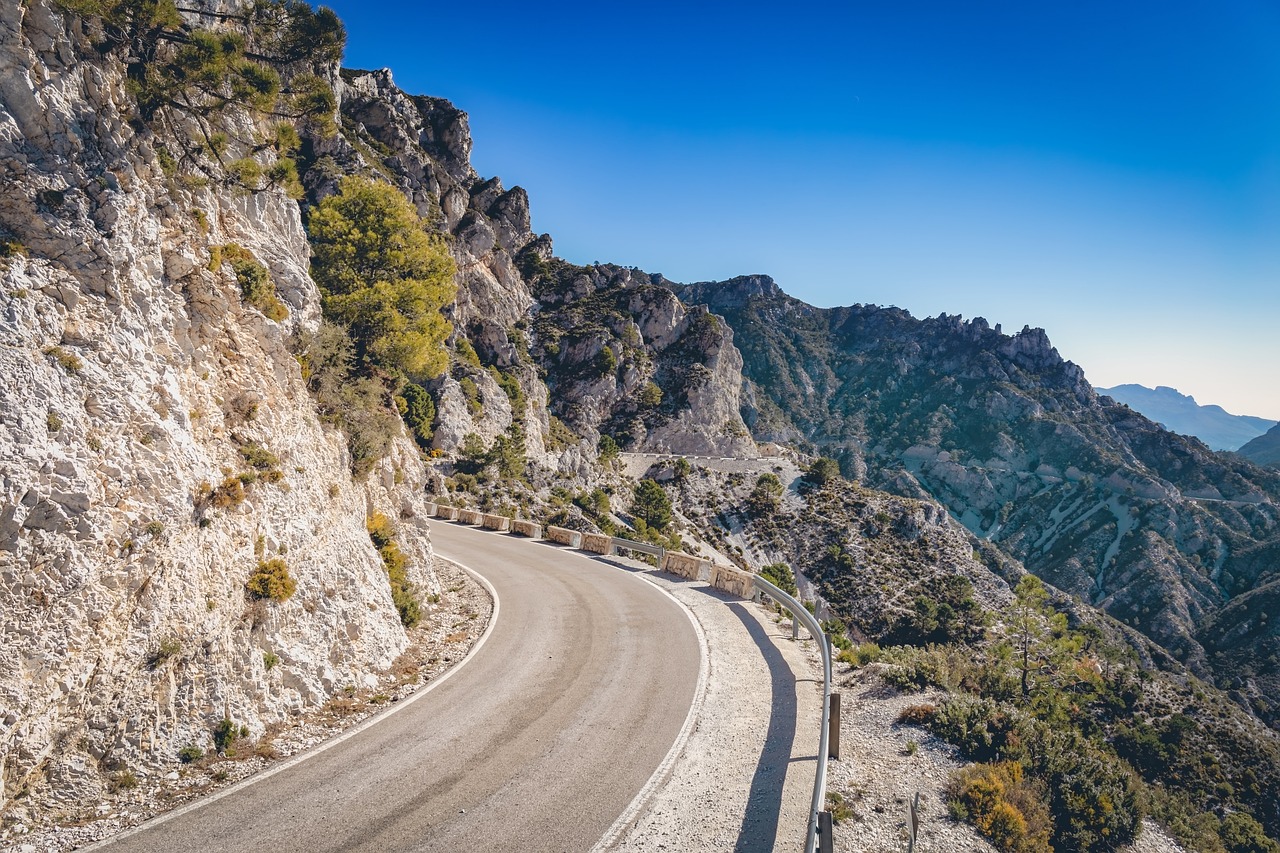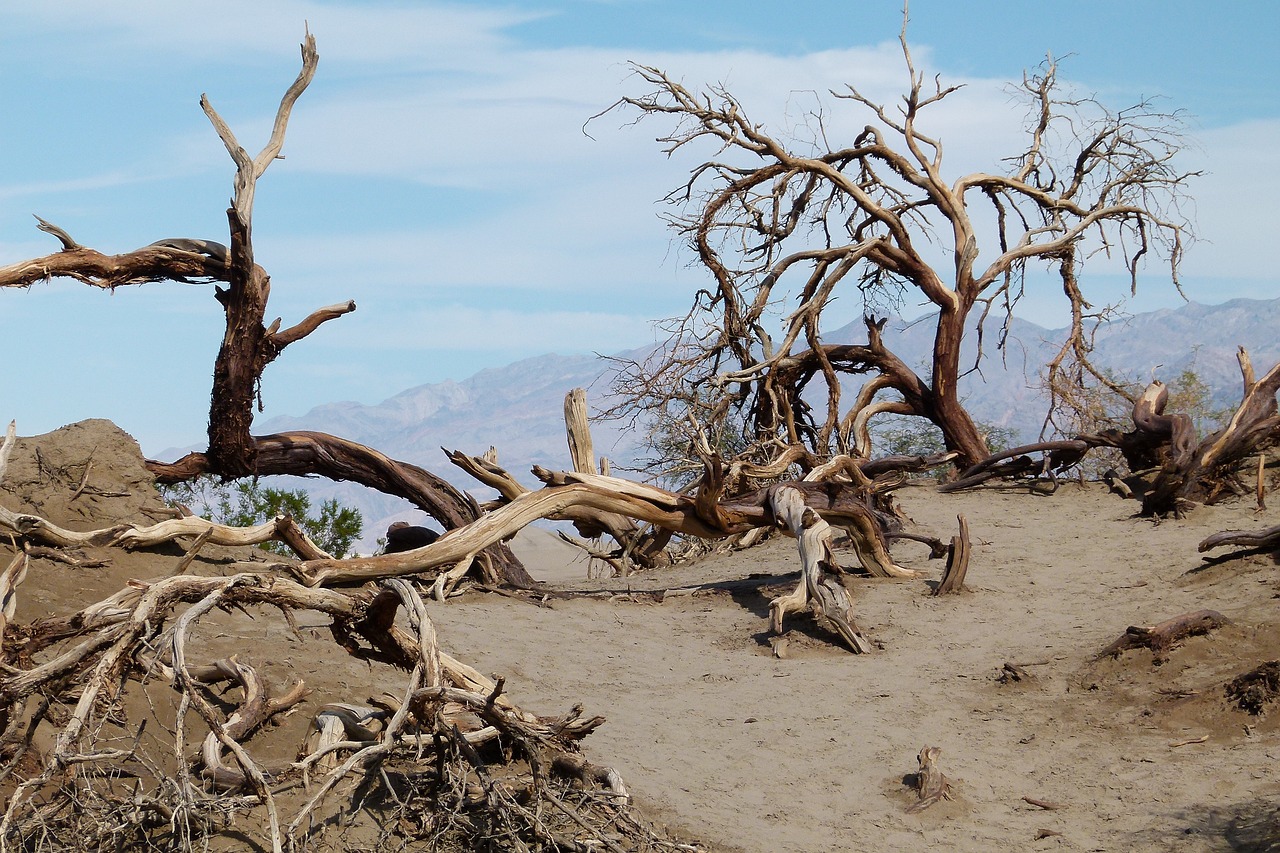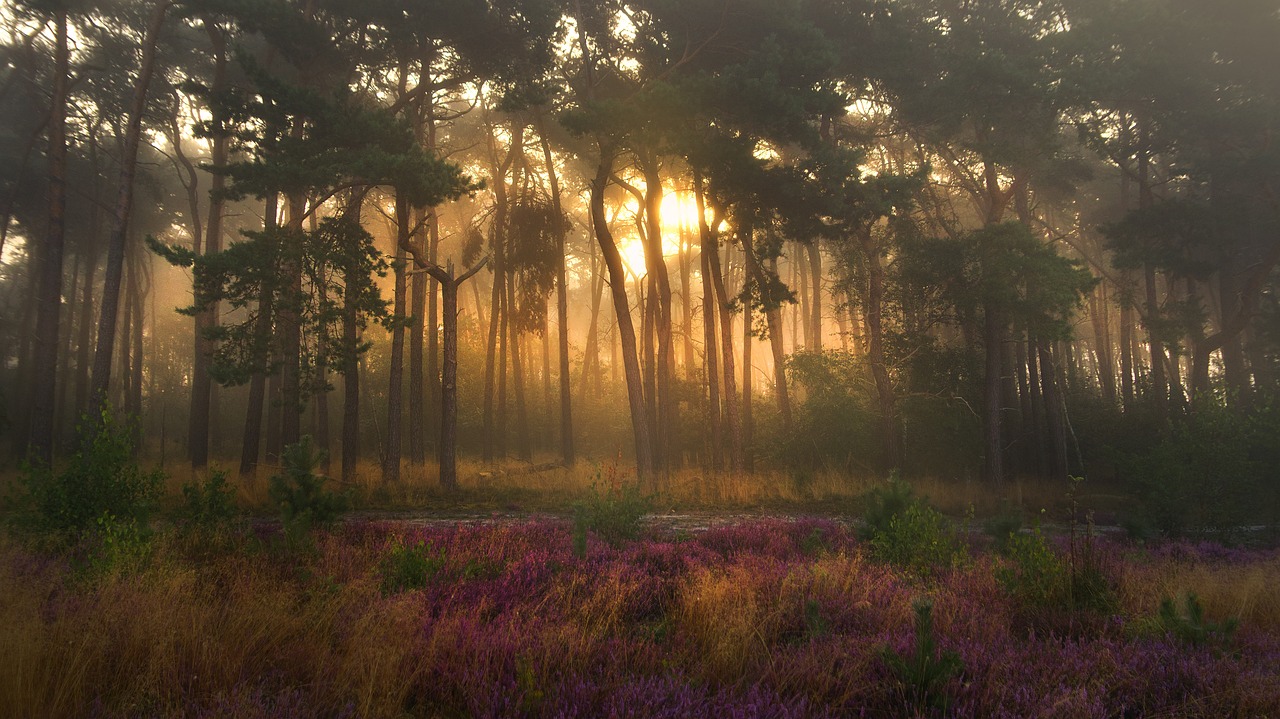How the Geography of a Region Influenced Its Religious Practices
Have you ever considered how the physical features of a region can shape the religious beliefs and practices of its inhabitants? The geography of a place plays a significant role in influencing the way people worship and perceive the divine. Let's delve into the fascinating connection between geographical landscapes and religious traditions.

Topography and Worship
When considering the influence of geographical features on religious practices, the relationship between topography and worship becomes evident. The physical landscape, including mountains, rivers, and valleys, played a crucial role in shaping the religious rituals and beliefs of ancient civilizations. For instance, the majestic presence of mountains often symbolized a connection to the divine, leading to the establishment of sacred sites and the performance of rituals at elevated altitudes. Rivers, on the other hand, were revered as sources of life and purity, with many cultures incorporating water-based ceremonies into their religious practices.
Moreover, valleys were often seen as fertile grounds for spiritual contemplation and community gatherings, fostering a sense of unity and reverence for the land. The topography of a region not only provided a backdrop for religious activities but also influenced the cosmology and mythology of various belief systems. The natural features of the landscape were imbued with symbolic meanings, shaping the narratives and symbols that defined the religious worldview of ancient societies.

Climate and Mythology
Exploring the impact of geographical features on the development and expression of religious beliefs and practices in different regions throughout history.
Investigating how the climate of a region shaped the mythology and deities worshipped by its inhabitants, reflecting their relationship with nature.
Climate plays a significant role in shaping the mythology and religious practices of a region. Imagine a land where the scorching sun beats down relentlessly, giving rise to tales of powerful sun gods reigning over the skies. In contrast, picture a region blanketed in eternal snow, where stories of frost giants and winter spirits dominate the folklore. The environment, whether harsh or bountiful, influences the way people perceive and interact with the world around them, ultimately shaping their religious beliefs.
In regions with temperate climates and abundant rainfall, deities associated with fertility, agriculture, and abundance often hold sway. The lush greenery and fertile soil inspire myths of bountiful harvests and the cycle of life and rebirth. In contrast, arid landscapes give rise to tales of drought, survival, and the struggle for sustenance, leading to the worship of gods and goddesses associated with water, rain, and fertility.
Moreover, the changing seasons in temperate regions mirror the eternal cycle of life, death, and renewal, influencing the creation of myths and rituals that celebrate the cyclical nature of existence. In colder climates, where winter brings darkness and scarcity, myths of light, warmth, and the triumph of life over death emerge as central themes in religious narratives.
Climate not only shapes the mythology of a region but also influences the spiritual practices and rituals of its inhabitants. In hot climates, where the sun is a life-giving force, solar worship and sun rituals are common, symbolizing vitality, strength, and divine power. Conversely, in colder regions, where the sun is scarce and precious, rituals to beckon its return and celebrate its warmth play a central role in religious observances.
Ultimately, the climate of a region serves as a powerful muse for the creation of mythology, shaping the beliefs and practices of its people in profound ways. By understanding the intimate connection between climate and mythology, we gain insight into the rich tapestry of religious diversity that has flourished across the globe.
1. How did geographical features influence the religious practices of ancient civilizations?
2. What role did trade routes play in the development of syncretic belief systems?
3. Why were coastlines significant in the worship of sea gods and goddesses?

Isolation and Spiritualism
Exploring the impact of geographical features on the development and expression of religious beliefs and practices in different regions throughout history.
Geographical isolation has played a crucial role in shaping the spiritual practices and beliefs of communities living in remote areas or on islands. When a group is cut off from the influence of other cultures, they develop unique religious traditions that are deeply rooted in their isolation. These communities often form close-knit bonds with their surroundings, attributing spiritual significance to the natural elements that surround them.
Living in seclusion, away from bustling trade routes and urban centers, allows these communities to cultivate a sense of spiritualism that is intricately connected to their immediate environment. The solitude and tranquility of isolated regions provide the perfect setting for introspection and contemplation, leading to a profound exploration of the spiritual realm.
Isolated communities often develop rituals and ceremonies that are closely tied to the land they inhabit. The geographical features of their surroundings, whether it be rugged mountains, dense forests, or expansive deserts, become integral to their religious practices. These natural landscapes are not merely physical settings but are imbued with spiritual significance, serving as sacred spaces for worship and reflection.
Moreover, isolation fosters a deep sense of community among the inhabitants, reinforcing their shared spiritual beliefs and practices. The collective experience of living in seclusion strengthens the bonds between individuals and creates a unified sense of purpose in their spiritual endeavors. This communal aspect of isolation contributes to the development of unique spiritual traditions that are passed down through generations.
In essence, isolation and spiritualism are intertwined, with geographical seclusion providing the fertile ground for the cultivation of profound spiritual experiences and beliefs. The isolation of certain regions has given rise to diverse and rich tapestries of spiritual practices that reflect the deep connection between people and their natural surroundings.

Trade Routes and Syncretism
Exploring the impact of geographical features on the development and expression of religious beliefs and practices in different regions throughout history.
Trade routes have long been conduits for the exchange of goods, ideas, and culture between diverse civilizations. These pathways of commerce not only facilitated the movement of material goods but also served as channels for the blending of religious beliefs and practices. Imagine a bustling marketplace where merchants from distant lands converge, each bringing with them their unique spiritual traditions and rituals. As these different cultures interacted along the trade routes, a process of syncretism emerged, leading to the fusion of religious elements and the creation of new, hybrid belief systems.
One example of syncretism through trade routes can be seen in the ancient Silk Road, a network of trade routes connecting the East and West. Along this vast expanse of land and sea routes, travelers encountered a rich tapestry of religious traditions, including Buddhism, Zoroastrianism, Christianity, and Islam. The interactions among these diverse faiths along the Silk Road gave rise to a blending of ideas, symbols, and practices, leading to the development of syncretic belief systems that incorporated elements from multiple religions.
Furthermore, trade routes not only facilitated the exchange of religious beliefs but also promoted cultural diffusion and mutual enrichment. As merchants traversed distant lands, they carried not only goods but also stories of their gods, myths, and rituals. Through this cultural exchange, communities along the trade routes were exposed to new religious concepts and practices, fostering a spirit of openness and tolerance towards diverse beliefs.
In essence, the intertwining of trade routes and syncretism exemplifies how geographical factors can shape the religious landscape of a region, highlighting the dynamic interplay between commerce, culture, and spirituality. The vibrant tapestry of beliefs that emerges from these interactions serves as a testament to the enduring influence of geography on the evolution of religious practices throughout history.

Coastlines and Sea Worship
Coastlines have always held a special place in the hearts of maritime cultures, influencing their religious beliefs and practices. The vast expanse of the sea stretching beyond the horizon has inspired awe and reverence, leading to the worship of sea gods and goddesses. In ancient times, civilizations living along coastlines often relied on the sea for sustenance and trade, further solidifying the importance of sea worship in their daily lives.
The rhythmic ebb and flow of the tides, the power of mighty waves crashing against the shore, and the mysteries hidden beneath the surface all contributed to the spiritual connection that coastal communities felt with the sea. The sea was not just a physical boundary but a mystical realm inhabited by divine beings, symbolizing both life and death, creation and destruction.
Sea worship manifested in various forms, from elaborate ceremonies and offerings to sea deities to the construction of grand temples near the shore. Sailors and fishermen often invoked the protection of sea gods before embarking on perilous journeys, seeking safe passage and bountiful catches. The sea became a source of both sustenance and danger, embodying the dual nature of existence itself.
Coastlines served as liminal spaces where the boundaries between the earthly and the divine blurred, inviting contemplation and spiritual reflection. The vastness of the sea mirrored the infinite possibilities of the cosmos, prompting deep philosophical inquiries into the nature of existence and the role of humanity within the grand tapestry of creation.
Through sea worship, coastal communities sought to establish a harmonious relationship with the forces of nature, acknowledging their dependence on the sea for survival while also acknowledging its uncontrollable power. The rituals and traditions associated with sea worship reinforced the interconnectedness of all life and the cyclical nature of existence, echoing the eternal rhythms of the tides.

Deserts and Asceticism
Exploring the impact of geographical features on the development and expression of religious beliefs and practices in different regions throughout history.
Deserts, with their vast expanses of arid land and extreme climates, have played a significant role in shaping religious practices centered around asceticism. The harsh conditions of deserts, characterized by scorching heat during the day and freezing temperatures at night, have often been seen as ideal environments for spiritual reflection and self-discipline.
Many religious traditions, such as early Christian monasticism in the Egyptian desert and the practices of the Desert Fathers, embraced the solitude and austerity of desert life as a means to achieve spiritual enlightenment. The barren landscape of deserts, devoid of distractions and luxuries, was believed to strip away worldly attachments and facilitate a deeper connection with the divine.
In the vast deserts of the Middle East, figures like the Prophet Muhammad and Jesus are said to have undergone periods of intense spiritual contemplation and self-denial, drawing inspiration from the solitude and emptiness of the desert environment. The stark beauty and unforgiving nature of deserts have been associated with the purification of the soul and the quest for inner peace.
Ascetic practices, such as fasting, prayer, and meditation, have been closely linked to desert environments, where the scarcity of resources and the relentless conditions serve as a test of one's devotion and resilience. The simplicity and austerity of desert life have inspired a profound sense of detachment from material possessions and a focus on the spiritual journey.
Through the centuries, deserts have been regarded as sacred spaces where individuals retreat to seek solitude, inner transformation, and communion with the divine. The barren landscapes and vast horizons of deserts continue to evoke a sense of mystery and transcendence, inviting seekers to embark on a spiritual pilgrimage towards self-discovery and enlightenment.
Q: How did geographical features influence religious beliefs in ancient civilizations?
A: Geographical features such as mountains, rivers, and deserts often shaped the religious rituals and beliefs of ancient civilizations, influencing their cosmologies and spiritual practices.
Q: What role did trade routes play in the development of syncretic belief systems?
A: Trade routes facilitated cultural exchange and interaction between diverse communities, leading to the blending of religious practices and the emergence of syncretic belief systems that incorporated elements from different traditions.

Forests and Animism
Forests have long been associated with animism, a belief system that attributes spiritual essence or consciousness to natural objects like trees, plants, and animals. The dense canopy of trees and the mysterious atmosphere of forests have inspired ancient cultures to perceive the world as teeming with spiritual beings. In these wooded areas, the rustling of leaves, the whisper of the wind, and the sounds of wildlife all contribute to the mystical aura that fosters beliefs in animism.
Ancient civilizations dwelling in forested regions often developed rituals and ceremonies to honor the spirits believed to inhabit these natural surroundings. Trees were revered as sacred entities, serving as conduits between the earthly realm and the spiritual world. Shamans and spiritual leaders sought wisdom and guidance by communing with the spirits of the forest, drawing inspiration from the interconnectedness of all living things in these lush environments.
Moreover, the concept of animism in forests highlights the profound respect for nature and the interconnected web of life that ancient cultures held dear. The belief that every tree, rock, and creature possessed a unique spirit emphasized the importance of harmony and balance in the natural world. This reverence for the environment not only shaped religious practices but also influenced societal values and ethical norms within these communities.
Furthermore, the prevalence of animism in forested regions underscores the deep-rooted connection between humans and the natural world. By attributing spiritual significance to the elements of nature, ancient cultures sought to forge a symbiotic relationship with their environment, recognizing the intrinsic worth and inherent wisdom present in the flora and fauna surrounding them.

Urban Centers and Religious Diversity
Urban centers have long been hubs of religious diversity, where different faiths intersect and coexist in a shared geographical space. The cosmopolitan nature of cities has historically attracted people from diverse cultural and religious backgrounds, leading to a rich tapestry of beliefs and practices within urban communities.
In bustling urban environments, temples, churches, mosques, synagogues, and other places of worship stand side by side, showcasing the variety of religious traditions present. This proximity often fosters interfaith dialogue and cooperation, as individuals from different religious backgrounds interact and learn from one another.
Moreover, urban centers serve as melting pots of cultural exchange, where religious practices from various regions and traditions converge. This cultural fusion can give rise to syncretic belief systems, blending elements of different faiths into unique religious expressions.
Within urban settings, religious diversity is not only tolerated but celebrated, with festivals, rituals, and ceremonies representing a mosaic of beliefs. The coexistence of multiple faiths in close proximity highlights the pluralistic nature of urban societies, where individuals have the freedom to practice their religion openly.
Furthermore, the presence of diverse religious communities in urban centers contributes to a sense of tolerance and acceptance among residents. Exposure to different beliefs and traditions can foster understanding and empathy towards others, promoting a harmonious coexistence within the urban landscape.
Frequently Asked Questions
- How did geography influence religious practices?
Geography played a significant role in shaping religious beliefs and practices by impacting the way communities interacted with their environment. For example, the presence of mountains or rivers could inspire rituals and ceremonies related to nature, while living in isolated regions led to the development of unique spiritual traditions.
- What role did trade routes play in religious syncretism?
Trade routes facilitated the exchange of ideas and cultural practices among different civilizations, resulting in the blending of religious beliefs and the creation of syncretic systems. This cultural interchange along trade routes contributed to the diversity and richness of religious traditions in various regions.
- How did urban centers influence religious diversity?
Urban centers served as melting pots of different cultures and religions, fostering religious diversity and tolerance. The cosmopolitan nature of cities allowed for the coexistence of multiple faiths within a shared geographical space, leading to the enrichment and cross-pollination of religious practices.



















